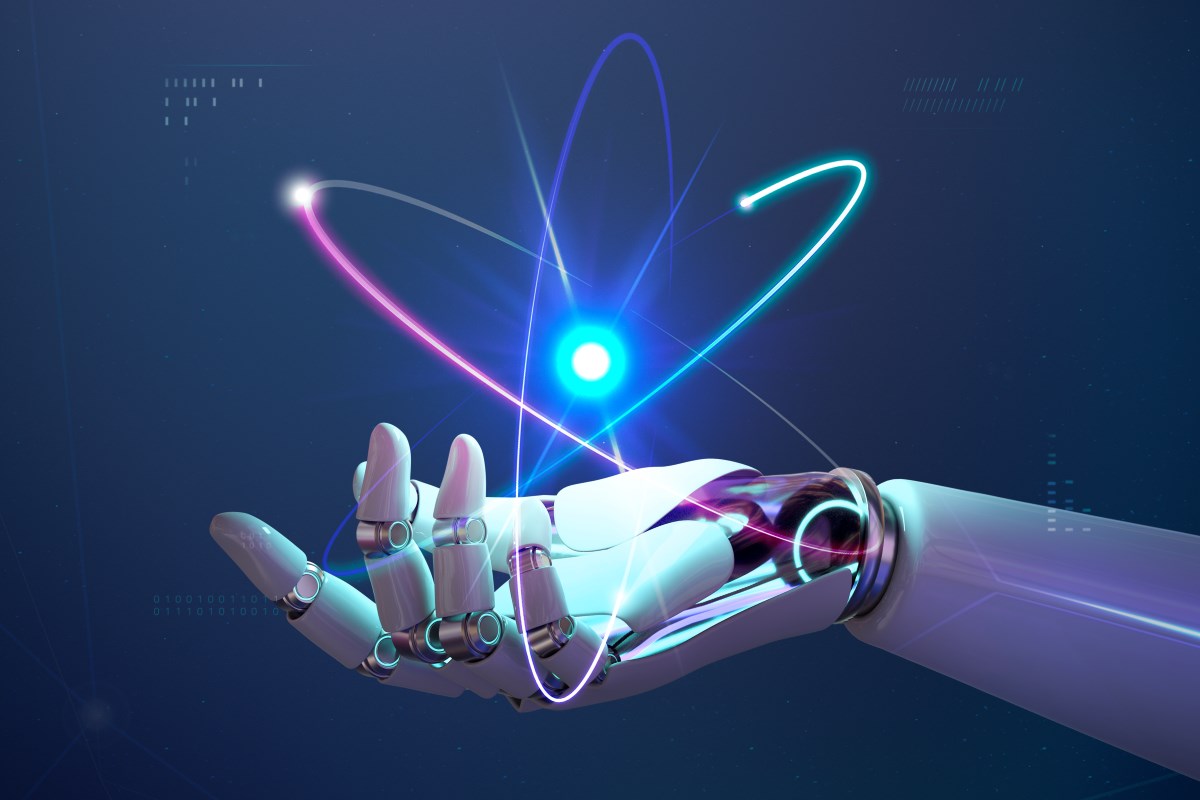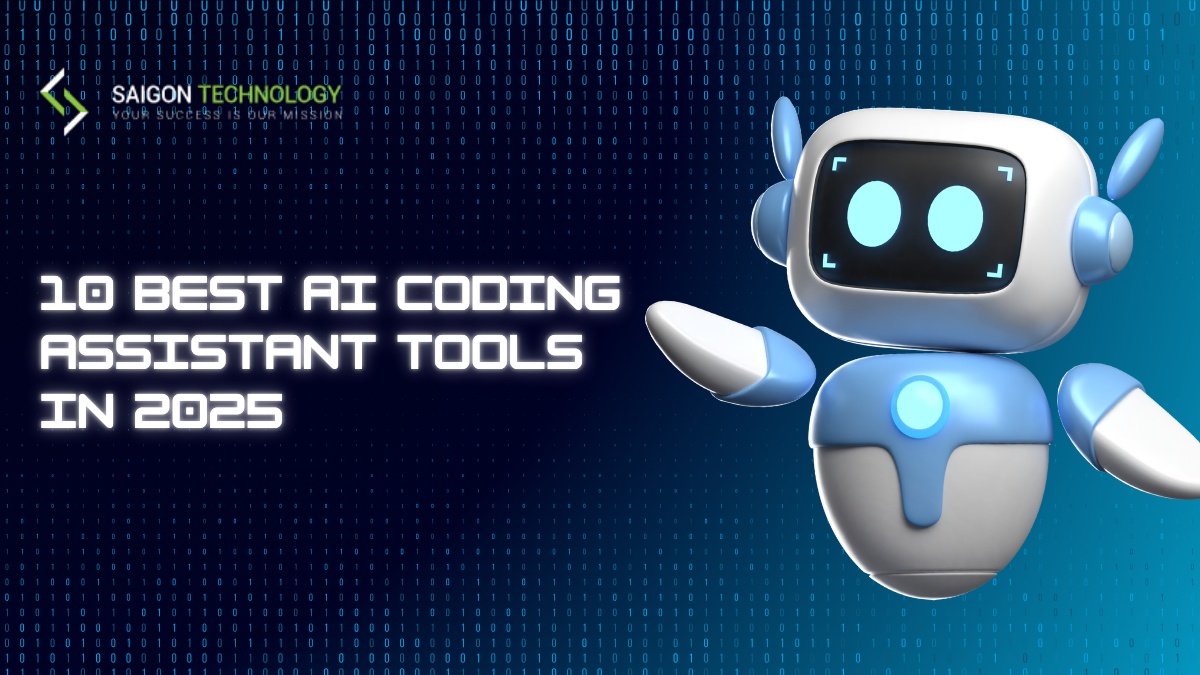Introduction
Artificial Intelligence (AI) is evolving rapidly, impacting industries ranging from healthcare and national security to workplace productivity and ethical AI governance. As AI democratization makes these technologies more accessible, businesses and governments must address AI regulation, data management, and the implications of generative AI.
This article explores the top AI trends shaping 2024 and beyond, including agentic AI, AI-powered workplace tools, generative AI applications, and AI in science and healthcare. We will analyze their challenges, benefits, and long-term impact on businesses and society.
1. AI Democratization: Making AI Accessible to Everyone
AI democratization is the movement toward making AI tools and technologies available to a broader audience, enabling more organizations and individuals to leverage AI capabilities. By focusing on cost-effectiveness, open-source AI frameworks, and cloud-based AI services, AI is no longer limited to large tech companies but is becoming more accessible to startups, researchers, and educators.
1.1 Cloud-Based AI Services and Cost-Effectiveness
✔ Cloud-based AI services from providers like DigitalOcean offer scalable solutions that reduce hardware costs.
✔ AI democratization enables businesses to adopt Artificial Intelligence without requiring large in-house data centers.
✔ Organizations benefit from cost-effectiveness by paying for AI services on a subscription or usage-based model.
📌 Example: Meta’s LLaMA models provide lightweight AI capabilities, making it easier for researchers and businesses to develop AI applications.
1.2 Open-Source Artificial Intelligence and Educational Initiatives
✔ Open-source AI frameworks such as TensorFlow and PyTorch allow developers to create custom AI models.
✔ Educational initiatives are bridging the AI skills gap by offering online courses in natural language processing (NLP) and speech-to-text applications.
✔ Multimodal AI is enhancing AI’s ability to process text, image, and speech inputs simultaneously.
📌 Example: Hugging Face’s open-source AI models enable developers to experiment with AI-powered chatbots and text generators.
Final Thoughts on AI Democratization
AI is more accessible than ever, thanks to cloud computing, open-source tools, and affordable AI models. However, organizations must ensure that AI is ethically developed and deployed, preventing bias and misuse.
2. AI Regulation and Ethics: Ensuring Responsible AI Development
As Artificial Intelligence becomes more powerful and widespread, AI regulation and ethics are critical to ensuring its responsible development and deployment. Governments and organizations are implementing AI ethics consultants, bias mitigation strategies, and legal frameworks to address concerns related to discrimination, misinformation, and privacy risks.
2.1 The Role of AI Ethics Consultants and Governance
✔ AI ethics consultants help organizations design AI systems that align with ethical principles and societal values.
✔ Data and AI leadership ensures AI models are developed responsibly, minimizing risks such as data manipulation.
✔ Efficient models focus on reducing energy consumption and optimizing hardware resources to create sustainable AI solutions.
📌 Example: Google’s AI ethics team monitors AI developments to ensure compliance with ethical standards and prevent potential biases.
2.2 Addressing Bias, Discrimination, and Explainability
✔ AI bias can lead to unfair outcomes, particularly in hiring, lending, and law enforcement.
✔ Equitable AI applications focus on eliminating biases to ensure fairness in AI decision-making.
✔ Explainability is essential for understanding how AI models arrive at decisions, improving transparency and trust.
📌 Example: AI-driven hiring tools, such as HireVue, implement bias detection to ensure diverse and inclusive recruitment processes.
2.3 Privacy Risks, Legal Risks, and the Challenge of AI Misinformation
✔ Privacy risks arise when AI collects and processes personal data without clear consent.
✔ Legal risk increases as AI-generated content, such as deepfakes, blurs the lines of accountability.
✔ AI misinformation can spread false narratives, requiring regulatory measures to prevent manipulation.
📌 Example: The European Union’s AI Act sets guidelines for Artificial Intelligence transparency, preventing AI-based discrimination and misinformation.
Final Thoughts on AI Regulation and Ethics
Ensuring AI safety, fairness, and transparency is a priority for regulators and businesses. The future of Artificial Intelligence will require stronger policies, explainability techniques, and ethical oversight to prevent AI misuse while maximizing its benefits.
3. AI and Data Management: Transforming Data-Driven Cultures
With the increasing adoption of Artificial Intelligence, businesses must manage massive amounts of structured and unstructured data efficiently. AI-powered tools are helping organizations overcome data and analytics challenges by improving data leadership, edge computing, and measurable business value.
AI is also driving a cultural shift, requiring companies to rethink how they store, process, and analyze data while ensuring privacy and security.
3.1 AI-Powered Tools and the Role of Data Leadership
✔ AI-powered tools enhance data processing, automation, and decision-making in real-time.
✔ Chief AI officers and chief data officers are leading initiatives to implement AI-driven data strategies.
✔ Data leadership ensures Artificial Intelligence solutions align with business goals and regulatory compliance.
📌 Example: AI-driven data lakes are helping businesses like Amazon and Google store and analyze petabytes of data efficiently.
3.2 Managing Unstructured Data and Edge Computing
✔ Unstructured data, such as emails, videos, and social media posts, presents challenges for traditional analytics.
✔ AI models process unstructured data to extract insights, making information more accessible.
✔ Edge computing enables Artificial Intelligence to analyze data locally, reducing latency and improving efficiency.
📌 Example: Generative AI is being used to summarize legal documents, extract insights from customer feedback, and analyze healthcare patient records.
3.3 Cultural and Change Management Challenges
✔ Companies face cultural and change management challenges as Artificial Intelligence adoption reshapes traditional workflows.
✔ A data-driven culture encourages employees to rely on AI-generated insights for decision-making.
✔ Businesses must ensure ethical AI adoption while maintaining human oversight.
📌 Example: Organizations like Microsoft are implementing AI-driven analytics platforms to help employees make data-informed decisions.
Final Thoughts on AI and Data Management
AI is revolutionizing data management by enabling businesses to extract actionable insights from unstructured data. However, organizations must prioritize governance, compliance, and cultural transformation to fully harness AI’s potential.
4. AI and National Security: Balancing Innovation and Privacy
Artificial Intelligence (AI) is revolutionizing national security, enabling governments and defense organizations to enhance border surveillance, intelligence gathering, and cybersecurity. AI-driven technologies provide improved analytics, real-time threat detection, and automated decision-making, strengthening national defense capabilities.
4.1 AI-Powered Cybersecurity and Threat Intelligence
✔ Artificial Intelligence strengthens cybersecurity by detecting data breaches, cyber threats, and hacking attempts in real time.
✔ Edge AI enables faster decision-making by processing security data closer to the source, reducing dependence on cloud computing.
✔ AI-driven threat intelligence analyzes global security risks, enabling governments to predict and neutralize attacks before they occur.
📌 Example: The U.S. Department of Defense (DoD) uses Artificial Intelligence to automate cyber defense, protecting national infrastructure from cyberattacks.
4.2 AI in Intelligence Gathering and Border Surveillance
✔ AI-driven intelligence gathering helps security agencies analyze vast amounts of data from social media, satellite imagery, and communications networks.
✔ Border surveillance uses AI-powered facial recognition, motion sensors, and drones to detect threats at national borders.
✔ AI automates data analysis and pattern recognition, reducing human error in intelligence operations.
📌 Example: The European Border and Coast Guard Agency (Frontex) integrates AI-driven border surveillance to track illegal activities more efficiently.
4.3 The Risks of Shadow AI, Data Manipulation, and Misinformation
✔ Shadow AI refers to unauthorized Artificial Intelligence systems used outside of official security protocols, leading to unregulated decision-making.
✔ Data manipulation can be exploited by bad actors to spread misinformation, disrupting national security efforts.
✔ AI-driven misinformation campaigns can influence elections, destabilize governments, and create geopolitical tensions.
📌 Example: Deepfake technology has been used to spread false political narratives, requiring AI-driven fact-checking mechanisms.
4.4 Ethical AI, Privacy Risks, and the Future of AI in Defense
✔ AI ethics frameworks are necessary to prevent human rights violations in national security applications.
✔ Privacy risks arise when AI-powered surveillance collects citizen data without consent, leading to concerns about mass surveillance and civil liberties.
✔ Governments must implement strict AI governance policies to ensure national security AI systems are transparent and accountable.
📌 Example: The United Nations AI for Good initiative is working to establish global AI regulations that balance security with ethical considerations.
Final Thoughts on AI in National Security
AI is a powerful tool for defense, intelligence, and cybersecurity, but it must be deployed ethically and responsibly. By addressing challenges such as shadow AI, misinformation, and privacy risks, governments can ensure that AI strengthens national security without compromising civil liberties.
5. AI in Science and Healthcare: Accelerating Innovation and Medical Breakthroughs
AI is revolutionizing scientific research and healthcare, enabling faster diagnostics, data-driven medical breakthroughs, and innovative drug discovery. With AI-powered models, patient records analysis, and generative AI applications, researchers and medical professionals are improving efficiency, accuracy, and accessibility in healthcare solutions.
From AI-assisted diagnostics to predictive analytics, Artificial Intelligence is driving scientific discoveries and transforming the way we approach disease detection and treatment planning.
5.1 AI-Driven Comprehensive Diagnostics and Patient Care
✔ AI enables comprehensive diagnostics by rapidly analyzing patient records and medical images for early disease detection.
✔ Machine learning models help doctors identify patterns in symptoms, disease progression, and treatment effectiveness.
✔ AI-powered doctor’s notes analysis ensures faster and more accurate patient assessments.
📌 Example: AI-powered radiology systems can detect lung cancer in X-rays with higher accuracy than human radiologists, enabling early intervention and better survival rates.
5.2 AI in Medical Imaging and Data Analytics
✔ Medical images from MRIs, CT scans, and ultrasounds are analyzed using AI algorithms to detect abnormalities with greater precision.
✔ Data analytics enables hospitals to process vast amounts of patient data, leading to more personalized treatments.
✔ AI reduces diagnostic errors by cross-referencing patient records and medical histories in real time.
📌 Example: Google’s DeepMind AI has developed models capable of detecting eye diseases from retinal scans with an accuracy comparable to top ophthalmologists.
5.3 AI-Powered Scientific Discoveries and Medical Breakthroughs
✔ AI accelerates scientific discoveries by analyzing large datasets in natural sciences, genetics, and pharmaceutical research.
✔ Data science tools powered by AI improve the efficiency of clinical trials and drug development.
✔ AI assists in the discovery of new drug compounds, leading to faster medical breakthroughs.
📌 Example: AI-driven platforms helped researchers analyze protein structures, leading to a major breakthrough in Alzheimer’s disease treatment development.
5.4 The Future of AI in Healthcare: Challenges and Ethical Considerations
✔ Ensuring AI progress in healthcare remains ethical and unbiased is a key challenge.
✔ AI must be transparent and interpretable, especially in life-critical medical decisions.
✔ Regulatory frameworks are needed to ensure AI-powered healthcare solutions protect patient privacy and comply with medical standards.
📌 Example: AI-based diagnostic tools must undergo rigorous clinical trials before approval for use in real-world healthcare settings.
Final Thoughts on AI in Science and Healthcare
AI is reshaping the medical and scientific landscape, leading to faster diagnostics, improved treatment strategies, and groundbreaking medical research. As AI continues to enhance patient care and fuel scientific discoveries, balancing AI progress with ethical considerations and regulatory oversight will be crucial for its long-term success.
6. AI in Workplace Productivity: Enhancing Efficiency and Automation
AI is transforming workplace productivity by automating repetitive tasks, improving workflow efficiency, and assisting employees with AI-driven personalization. Businesses are integrating AI assistants, AI chatbots, and AI-powered job search platforms to optimize daily operations and collaboration.
From AI coding partners like GitHub Copilot to AI-powered writing tools, companies are leveraging AI to reduce workload, boost creativity, and streamline processes.
6.1 AI Assistants and AI Chatbots in Business Operations
✔ AI assistants help employees manage schedules, organize meetings, and automate tasks.
✔ AI chatbots provide instant support for customer service and HR inquiries.
✔ AI-driven personalization enhances employee engagement by tailoring content and recommendations.
📌 Example: Microsoft Copilot integrates with Office 365, allowing employees to generate reports, summarize emails, and automate document creation.
6.2 AI Coding Partners and AI-Powered Writing Tools
✔ AI coding partners like GitHub Copilot assist developers by suggesting code snippets and reducing debugging time.
✔ AI writing tools automate content creation, improving efficiency in marketing, legal, and documentation workflows.
✔ Natural language processing (NLP) enables AI to generate human-like text for business communications.
📌 Example: AI-powered efficiency tools like Jasper AI help businesses generate blog posts, emails, and presentations faster.
6.3 AI-Powered Job Search and Edge AI for Workplace Optimization
✔ AI-powered job search platforms match candidates with job opportunities based on AI-driven insights.
✔ Edge AI allows businesses to process data locally, improving real-time decision-making in workplaces.
✔ AI enhances workflow automation, allowing businesses to focus on high-value tasks.
📌 Example: LinkedIn’s AI-powered job recommendations analyze candidate profiles to suggest tailored job opportunities.
Final Thoughts on AI in Workplace Productivity
AI-powered efficiency tools, AI assistants, and AI chatbots are reshaping modern workplaces by improving productivity, collaboration, and decision-making. As AI continues to evolve, companies must adapt AI-driven solutions while ensuring data security and responsible AI implementation.
7. Agentic AI: The Rise of Autonomous Decision-Making Systems
Agentic AI refers to AI systems capable of autonomous decision-making, adaptive behavior, and real-time problem-solving. Unlike traditional AI models that rely on predefined rules, agentic AI operates independently using reinforcement learning, advanced neural networks, and robotic process automation tools.
These AI agents are increasingly being integrated into enterprise transaction systems, digital operations, and safety-critical applications, enhancing scalability and efficiency. However, ensuring safety features, ethical AI deployment, and bias mitigation remains a key challenge.
7.1 Autonomous Decision-Making and Adaptive Behavior
✔ Agent ecosystems enable AI to interact with multiple systems autonomously.
✔ Reinforcement learning helps AI agents improve decision-making over time.
✔ Adaptive behavior allows AI to respond dynamically to changing environments.
📌 Example: Uber Agent AI optimizes ride pricing, demand balancing, and driver matching without human intervention.
7.2 AI in Enterprise Transaction Systems and Process Automation
✔ Enterprise transaction systems use agentic AI for automated financial operations and fraud detection.
✔ Robotic process automation tools streamline workflows by reducing human intervention in repetitive tasks.
✔ Foundational models help businesses deploy custom AI solutions for automation and predictive analytics.
📌 Example: Banks use AI-powered fraud detection models to identify suspicious transactions in real time.
7.3 Scalability, Safety Features, and Ethical Considerations
✔ Scalability ensures that AI-driven systems can handle growing business demands efficiently.
✔ Safety features in AI agents prevent malicious actions and unintended consequences.
✔ Collaborative AI governance is essential to prevent ethical risks and data misuse.
📌 Example: DigitalOcean’s GenAI platform is developing safe and scalable AI models to support autonomous enterprise applications.
Final Thoughts on Agentic AI
Agentic AI is revolutionizing enterprise automation, autonomous decision-making, and AI-driven operations. As businesses integrate self-learning AI agents, ensuring safety, transparency, and ethical deployment is crucial for widespread adoption.
8. Generative AI: Revolutionizing Content Creation and AI Applications
Generative AI is reshaping content creation, software development, and marketing by enabling machines to generate text, images, videos, and even personalized interactions. By leveraging multimodal large language models, retrieval-augmented generation (RAG), and AI-driven personalization, businesses can automate creativity, enhance user experiences, and drive innovation across multiple sectors.
With advancements from OpenAI’s ChatGPT, Google DeepMind’s Genie, and AI-powered content generation tools, industries are integrating AI coding assistants, AI writing tools, and generative AI bots to streamline workflows and improve efficiency. However, ensuring the ethical use of AI-generated content and managing unstructured data remain key challenges.
8.1 AI Writing Tools and AI-Driven Personalization
✔ AI writing tools automate the creation of articles, social media posts, and product descriptions, reducing content production time.
✔ AI-driven personalization tailors email campaigns, website experiences, and advertisements to individual users.
✔ Generative AI bots engage with customers in real time, improving customer support and interaction quality.
📌 Example: OpenAI’s ChatGPT generates personalized responses for businesses, optimizing customer service and content generation.
8.2 AI Coding Assistants and Customized Chatbots
✔ AI coding assistants, such as GitHub Copilot, help developers by suggesting code snippets, debugging issues, and automating repetitive tasks.
✔ Customized chatbots use generative AI to provide context-aware, dynamic conversations, improving user engagement.
✔ AI reduces the burden on human developers by handling complex programming tasks, making software development more efficient.
📌 Example: Google DeepMind’s Genie is developing AI models capable of generating interactive gaming environments and AI-driven game narratives.
8.3 Generative AI in Video Creation and Multimedia Content
✔ Generative video tools allow businesses to create AI-generated ads, training materials, and storytelling animations.
✔ Multimodal large language models integrate text, image, and video processing, enabling AI to generate and manipulate rich multimedia content.
✔ AI enables automated video editing, voiceover creation, and scene generation, reducing production costs.
📌 Example: AI-powered tools like Runway ML and Synthesia allow brands to create AI-generated marketing videos without professional video editors.
8.4 The Role of Retrieval-Augmented Generation (RAG) and Unstructured Data
✔ Retrieval-augmented generation (RAG) enhances generative AI by incorporating real-world data into AI-generated content, ensuring greater accuracy and relevance.
✔ AI processes unstructured data, such as text, audio, and images, to generate coherent and fact-based responses.
✔ Businesses use RAG to improve knowledge-based AI assistants, reducing misinformation in AI-generated outputs.
📌 Example: AI-powered financial analysis tools use RAG to generate accurate stock market reports based on real-time data sources.
8.5 Ethical Considerations and the Future of Generative AI
✔ Managing AI-generated misinformation is essential to prevent false narratives and biased outputs.
✔ Regulatory frameworks must address issues of content ownership, AI transparency, and deepfake prevention.
✔ The future of generative AI will involve more refined AI creativity, human-AI collaboration, and improved safeguards for ethical AI deployment.
📌 Example: Companies like Meta and OpenAI are working on watermarking AI-generated content to ensure transparency and authenticity.
Final Thoughts on Generative AI
Generative AI is revolutionizing industries by automating content creation, software development, marketing, and multimedia production. As AI-driven personalization, multimodal AI models, and retrieval-augmented generation continue to evolve, businesses must balance innovation with responsible AI use, ensuring transparency, accuracy, and ethical content generation.
9. Multimodal AI: Enhancing AI Capabilities Through Multiple Data Types
Multimodal AI is transforming the way artificial intelligence interacts with the world by integrating text, audio, images, and video into a unified system. Unlike traditional AI models that process only one data type at a time, multimodal AI enables machines to understand and generate richer, context-aware outputs across different formats.
Companies like OpenAI, Meta, and Mistral AI are advancing multimodal models that combine AI-driven personalization, foundational models, and retrieval-augmented generation (RAG) workflows to enhance AI’s understanding, creativity, and problem-solving capabilities. However, implementing proper guardrails to ensure ethical AI use remains a challenge.
9.1 How Multimodal AI Works: Integrating Multiple Data Types
✔ Multimodal models process and interpret different data types, such as text, audio, images, and video, to create more comprehensive AI responses.
✔ AI-powered RAG workflows improve accuracy by retrieving real-world knowledge before generating content.
✔ Foundational models in multimodal AI allow businesses to build scalable AI systems that work across various applications.
📌 Example: OpenAI’s GPT-4V (Vision) extends traditional language models by integrating image recognition and text generation, enabling more interactive AI experiences.
9.2 Applications of Multimodal AI in Various Industries
✔ AI-driven personalization enhances e-commerce, tailoring product recommendations based on a combination of text queries, visual search, and user behavior.
✔ Healthcare AI systems analyze medical images, patient records, and doctor’s notes to provide comprehensive diagnostics.
✔ Video and audio-based AI models improve accessibility by generating real-time captions and speech-to-text conversions.
📌 Example: Meta’s multimodal AI models help detect harmful content by analyzing video, audio, and text data in real-time.
9.3 Multimodal AI in Content Generation and Creativity
✔ Generative AI tools combine text, video, and images to create interactive content.
✔ AI-driven video editing and animation tools allow for automatic scene generation based on text descriptions.
✔ Mistral AI’s multimodal systems enable more realistic and engaging AI-generated art, music, and storytelling.
📌 Example: Adobe Firefly AI lets users generate images and videos from text prompts, revolutionizing digital content creation.
9.4 Challenges: Ethical Guardrails and AI Bias
✔ Implementing guardrails ensures multimodal AI does not produce biased or misleading outputs.
✔ Data privacy concerns arise when AI models process sensitive visual and audio data.
✔ AI transparency is necessary to understand how multimodal models make decisions.
📌 Example: AI-generated deepfake videos raise concerns about misinformation, leading to calls for better guardrails and regulatory oversight.
Final Thoughts on Multimodal AI
Multimodal AI is reshaping industries by integrating multiple data types into intelligent systems that enhance understanding, personalization, and content creation. As companies like Meta, OpenAI, and Mistral AI push the boundaries of multimodal models, organizations must implement strong AI guardrails to ensure ethical and responsible use.
10. Natural Language Processing (NLP): Advancements and Industry Applications
Natural Language Processing (NLP) is revolutionizing the way machines interact with human language, enabling AI to process, analyze, and generate text and speech more effectively. With advancements in small language models (SLMs), sentiment analysis, and speech-to-text applications, NLP is enhancing industries such as customer support, language translation, and data analysis.
Companies like Google Translate, OpenAI, and Microsoft are optimizing NLP models to improve audio summaries, chatbot interactions, and real-time language translation, making communication faster and more accessible. However, balancing computational resources, processing times, and accuracy remains a key challenge.
10.1.NLP in Language Translation and Cross-Cultural Communication
✔ Google Translate and AI-powered translation tools use deep learning to provide real-time language translation with greater fluency.
✔ Small language models (SLMs) optimize translation services by reducing computational resources while improving speed and accuracy.
✔ AI-driven speech-to-text applications enable multilingual voice assistants to transcribe, translate, and analyze conversations.
📌 Example: Meta’s AI translation models allow real-time translations in hundreds of languages, improving global communication.
10.2 Chatbots and AI-Powered Customer Support
✔ Chatbots powered by NLP handle customer support inquiries, automate responses, and provide instant assistance.
✔ Sentiment analysis helps AI detect customer emotions, enabling businesses to personalize interactions and improve satisfaction.
✔ AI-powered chatbots reduce workload for human agents, allowing them to focus on complex issues.
📌 Example: AI-driven virtual assistants like Amazon Alexa and Google Assistant use NLP to understand and respond to natural speech.
10.3 NLP in Data Analysis and Business Intelligence
✔ NLP enables businesses to extract valuable insights from unstructured text data such as emails, social media posts, and reviews.
✔ Audio summaries allow professionals to convert long meetings and conversations into concise, actionable insights.
✔ Faster processing times enable companies to analyze large datasets in real time, improving decision-making.
📌 Example: Financial institutions use NLP models to scan reports, detect market trends, and flag potential risks.
10.4 Challenges and the Future of NLP
✔ Reducing computational costs while maintaining high performance is crucial for scalable NLP adoption.
✔ Bias in language models must be mitigated to ensure fair and accurate AI-generated content.
✔ Future advancements in NLP will improve personalized AI interactions, real-time translation, and AI-generated content creation.
📌 Example: OpenAI’s GPT models continue to evolve, making NLP-powered AI assistants more context-aware and efficient.
Final Thoughts on NLP’s Impact
Natural Language Processing is reshaping communication, automation, and data analysis, enabling businesses to operate more efficiently and globally. As small language models, sentiment analysis, and speech-to-text applications continue to evolve, industries must leverage NLP responsibly while optimizing computational efficiency.
Conclusion: The Future of AI Trends
The rapid advancements in AI are reshaping workplaces, healthcare, cybersecurity, national security, and creative industries. From AI democratisation and ethical AI governance to agentic AI and generative AI applications, businesses must strategically adopt AI while balancing efficiency, security, and ethical considerations.
Key AI Trends Shaping the Future:
✔ AI Democratization – Open-source AI and cloud-based AI services are making AI accessible to everyone.
✔ AI Regulation and Ethics – Stronger governance frameworks are ensuring AI transparency and fairness.
✔ AI in Workplace Productivity – AI assistants and automation tools are enhancing efficiency.
✔ AI in Science and Healthcare – AI-driven medical breakthroughs and diagnostics are improving patient outcomes.
✔ Agentic AI – AI is moving toward autonomous, decision-making AI agents that operate independently.
✔ Generative AI – AI-powered creativity is revolutionizing content creation, search engines, and 3D simulations.
Looking Ahead: What’s Next in AI?
🚀 The future of AI will see:
✔ AI-powered assistants becoming more human-like in conversation and reasoning.
✔ Quantum AI accelerating scientific and industrial advancements.
✔ AI governance evolving to regulate misinformation, privacy risks, and AI ethics.
✔ AI-driven hyper-personalization improving customer experiences across industries.
Businesses that embrace AI’s potential while prioritizing responsible AI development will lead the next wave of digital transformation.
Start Your AI Journey Today!
✔ Looking to integrate AI into your business operations?
✔ Want to explore generative AI applications and AI automation?
✔ Need expert insights on AI-driven innovation and regulatory compliance?
Let’s collaborate! 🚀










